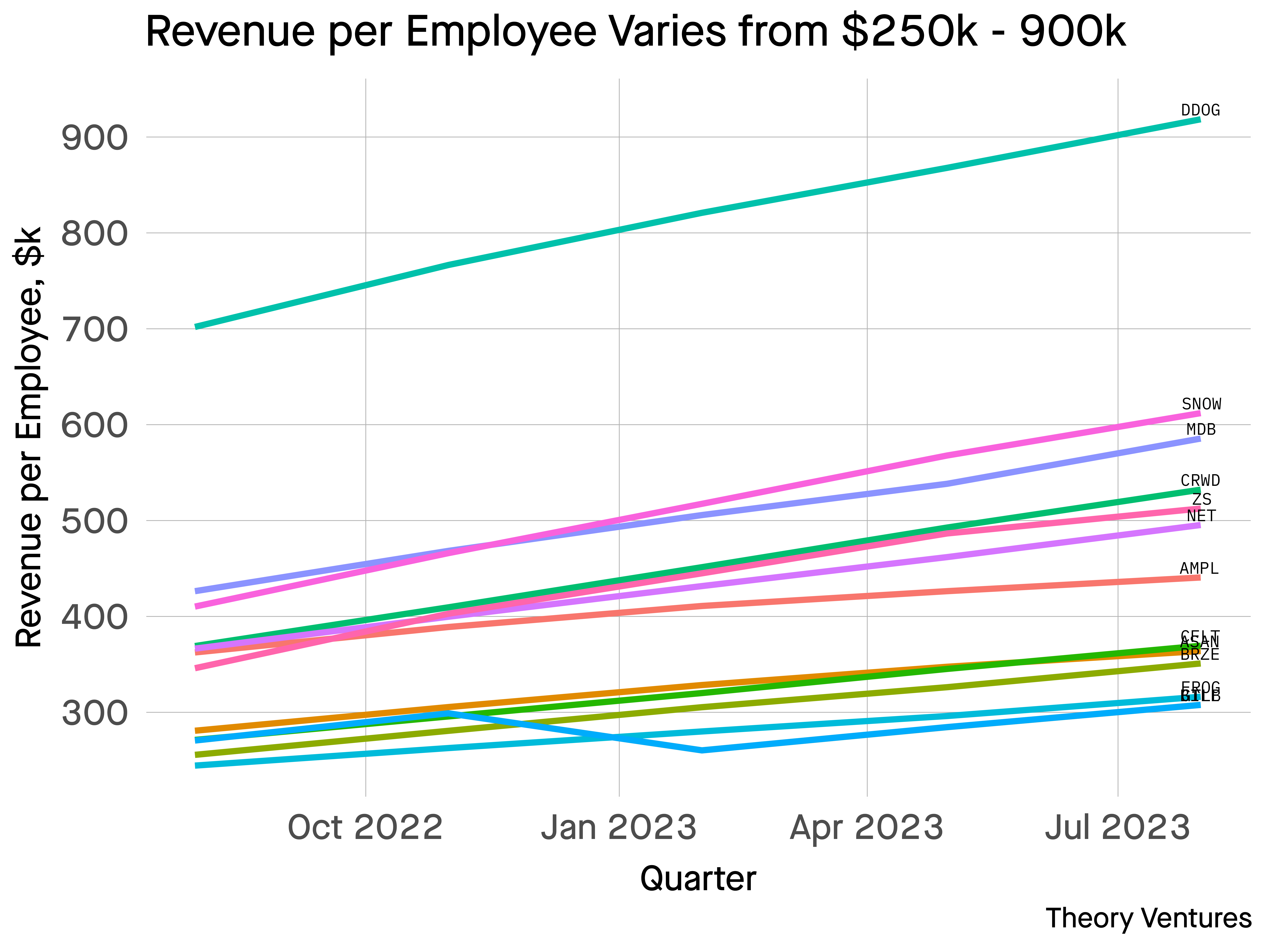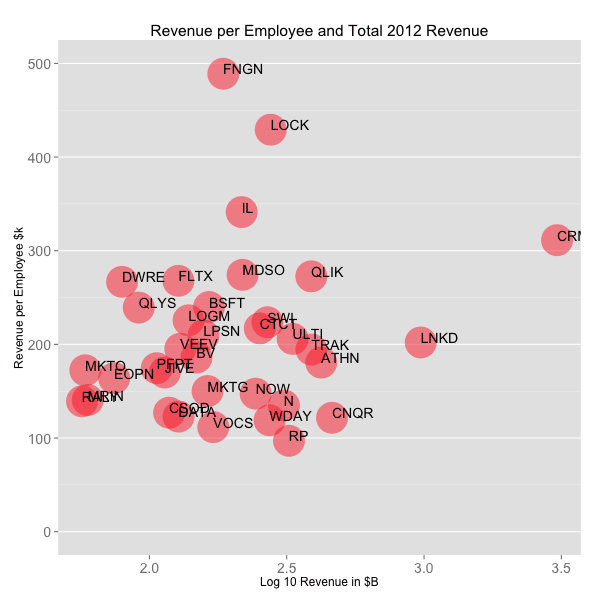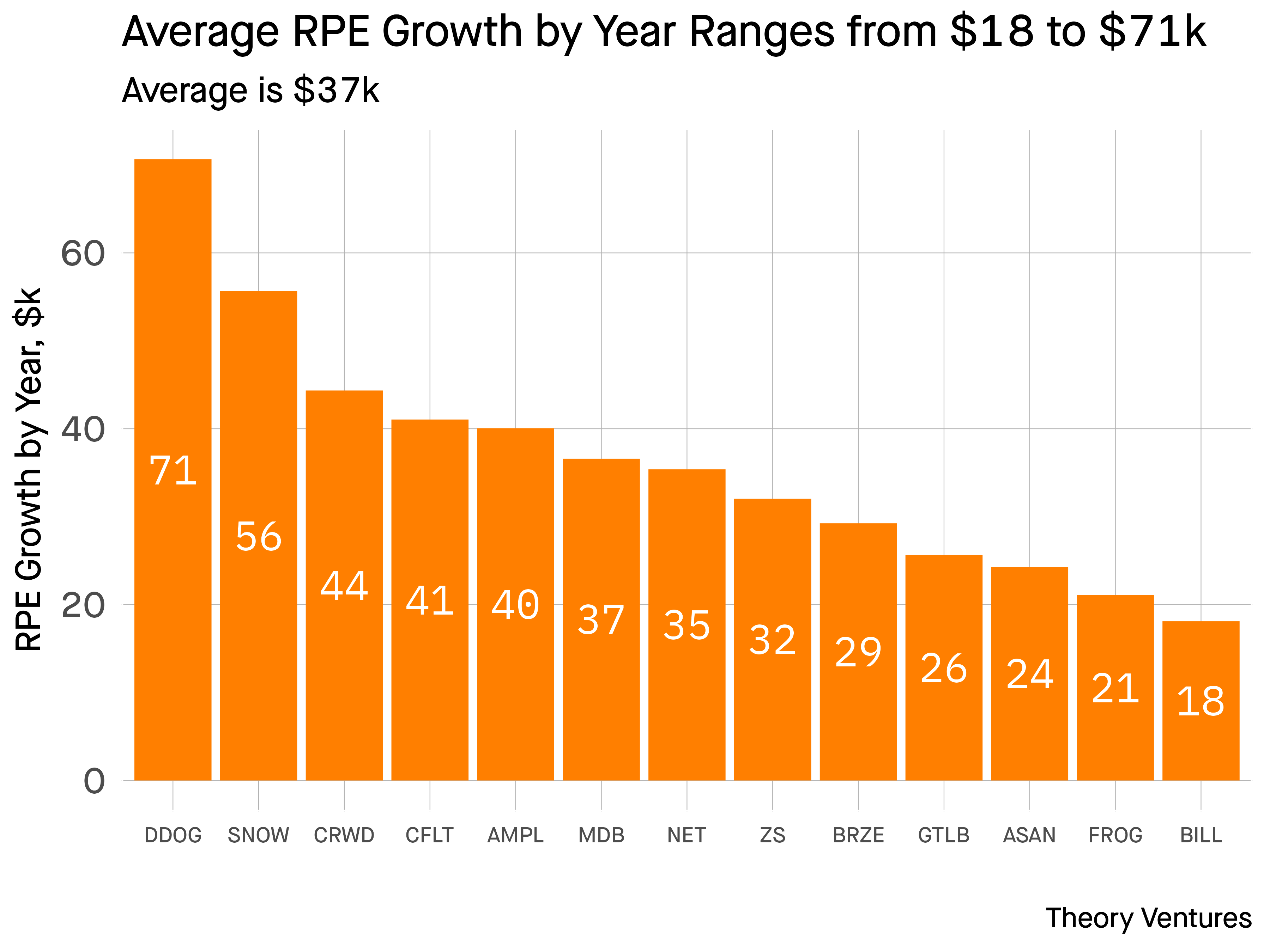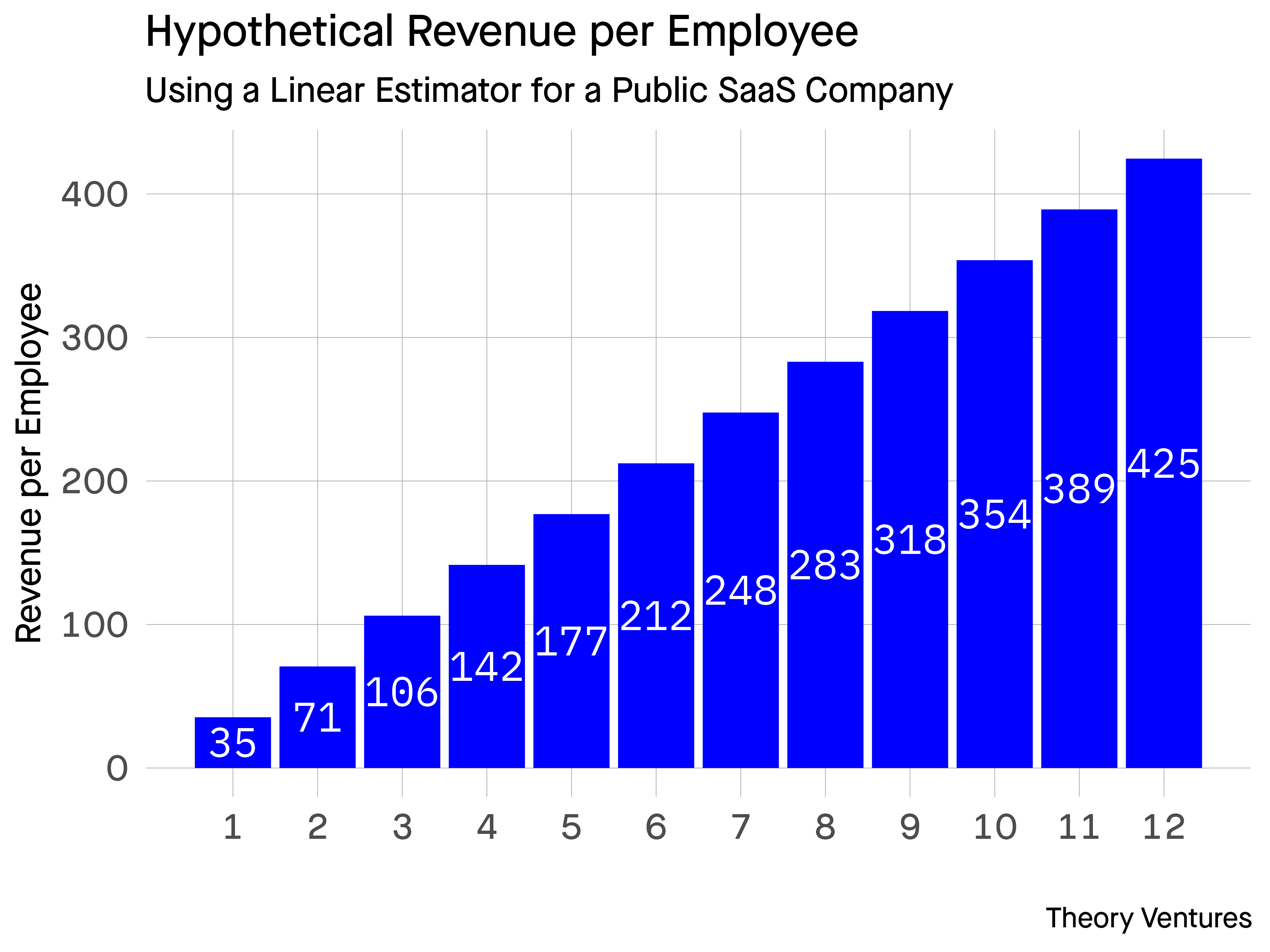Recently, I was on the HR Heretics podcast and we talked about the increasing efficiency of software companies (in addition to other topics including the implications of AI for executives, how to diligence a candidate, & what board members expect of their people leaders).
I realized It has been a decade since I’ve updated revenue-per-employee metrics.
Here are the trends across the group of 13 publicly traded software & infrastructure companies (which are the fastest growers or most-highly valued) over the last 5 quarters.

Revenue per employee spans approximately $200k-$900k. Datadog tops the list, likely driven by their tremendous cross-selling ability.
Snowflake is second, pushed by their best-in-class net dollar retention (NDR). Both these companies also focus on enterprise accounts – in contrast to Bill.com at the bottom, which targets small businesses.

Compare that to the benchmarks in 2013! In addition to the dated charts!
In 2013, the average revenue per employee of these companies totaled $200k. Today, that number is $470k for the basket of companies above, a 135% improvement.
Normalizing for inflation (which was 34% during this past decade), modern businesses produce 2x more RPE than their decade old selves.
| Company | RPE 2013, $k | RPE 2023, $k | CAGR |
|---|---|---|---|
| CRM | 325 | 375 | 1.4% |
| VEEV | 200 | 880 | 15.9% |
| WDAY | 120 | 427 | 13.5% |
| NOW | 143 | 502 | 13.3% |
Most companies in the image have been acquired. The four horses of the previous decade that still run free, I’ve listed above. RPE for the top 3 grew at 13-16%.
Salesforce barely budged, perhaps an indicator of how labor-intensive the business is or how much the revenue growth has been through acquisition (Slack, Mulesoft, & Tableau).

In 2023, these companies added about $37k in revenue per employee, but the range spans $18-71k.

Over their lifespans, these companies have added about $30k in revenue per employee per year.
Using a linear estimator, we can plot the average revenue per employee per year for a hypothetical public company.
The reality is most companies do not grow revenue-per-employee per year linearly.
The data suggests revenue per employee growth is zero dring product development. Then the company enters a period of hyper growth during which it scales rapidly, approximately 50-60% annually.
| Year in the Company’s Life | Estimated RPE Growth | Note |
|---|---|---|
| 0-2 | Product Development | 0% |
| 2-8 | Hyper-growth | 50-100% |
| 8-15 | Public company | 30% |
| 15 + | Late-stage public | 15% |
For these publicly traded companies, there’s a slow decline in growth rate but the combination of product-market fit & the opportunity to expand the product portfolio allows them to keep expanding revenue per employee at attractive rates.
I wonder what trends we’ll see in 2033. Perhaps another doubling (driven by AI!)
